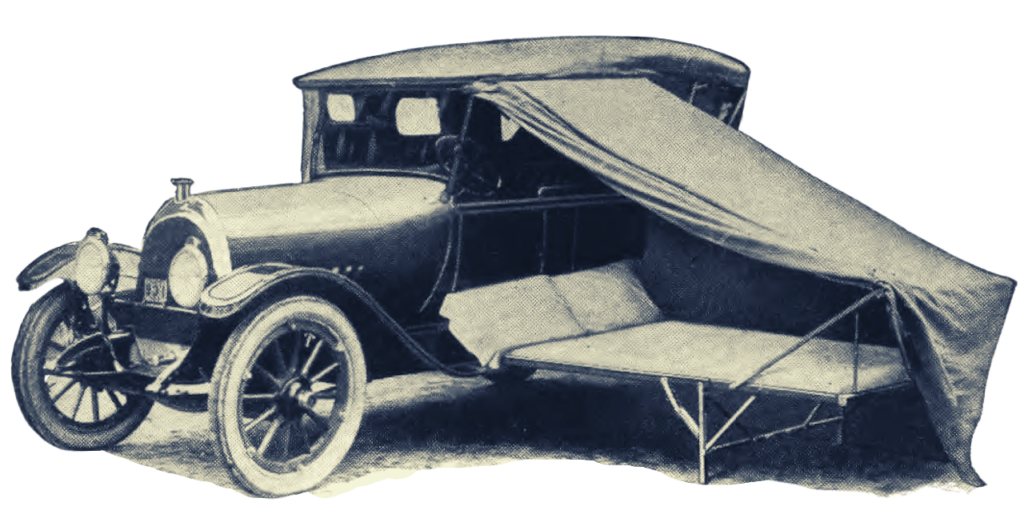
A 1921 unique running-board combination bed and tent. When not set up, it was stored on the auto’s running board. “The Schilling bed measures 48 inches wide by 78 inches long and the complete outfit with tent and cover weighs 65 pounds.”
In the early 1900s, as more and more people were buying automobiles, many set out to explore in them, some going nearby and a few venturing far.
Atlas Obscura
How America Joined Its Two Great Loves,
Cars and the Outdoors
Accessed 8/29/2022
By the 1920s, there were thousands of auto camps—one estimate puts the number somewhere between 3,000 and 6,000—and more than 10 million people trying out life on the road. Where once camps were free, some started charging a small fee for nightly use, and privately run camps opened to compete with municipal ones.
Soon, more permanent structures, usually small, flimsy cabins, were going up on campgrounds—no tent needed—and “motor hotels” that catered to auto travelers began pulling away campers who had never been that enamored of sleeping on a cot bed in the first place.
At the same time, camps started making accommodations for car campers who couldn’t fit all their gear in a normal car and wanted to bring a trailer along with them. Within about two decades, Americans had gone from camping on the side of the road to inventing car camping, motels, and proto-RVs.

